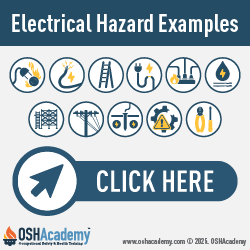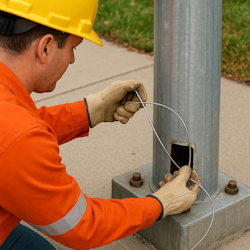Recognizing Hazards
The first step toward protecting yourself is recognizing the many hazards you face on the job.
To do this, you must know which situations can place you in danger. Knowing where to look helps you recognize hazards. Below are some examples:
- Inadequate wiring
- Exposed electrical parts
- Overhead power lines
- Wires with bad insulation
- Ungrounded electrical systems and tools
- Tools that are not double-insulated
- Overloaded circuits
- Damaged power tools and equipment
- Defective ladders and scaffolding
- Metal ladders
- Wet working conditions
Real-World Accident
An electrician was removing a metal fish tape from a hole at the base of a metal light pole. (A fish tape is used to pull a wire through a conduit run.) The fish tape became energized, electrocuting him. As a result of its inspection, OSHA issued a citation for three serious violations of the agency's construction standards. If the following OSHA requirements had been followed, this death could have been prevented.
- De-energize all circuits before beginning work.
- Always lock out and tag out de-energized equipment.
- Companies must train workers to recognize and avoid unsafe conditions associated with their work.
Knowledge Check Choose the best answer for the question.
5-1. Which one of the following conditions poses the LEAST risk of an electrical injury on the job?
- Dry or low humidity work conditions
- Working on metal ladders
- Ungrounded electrical systems and tools
You forgot to answer the question!


